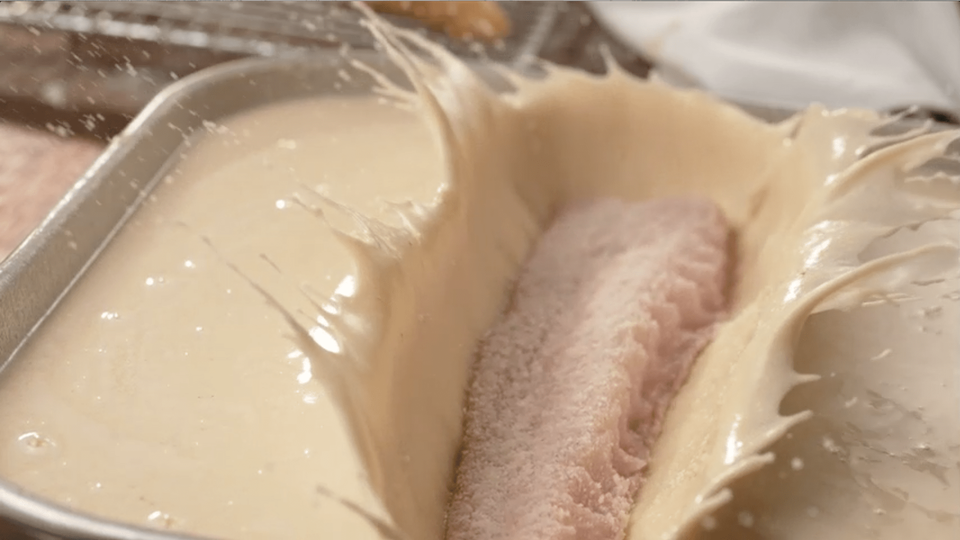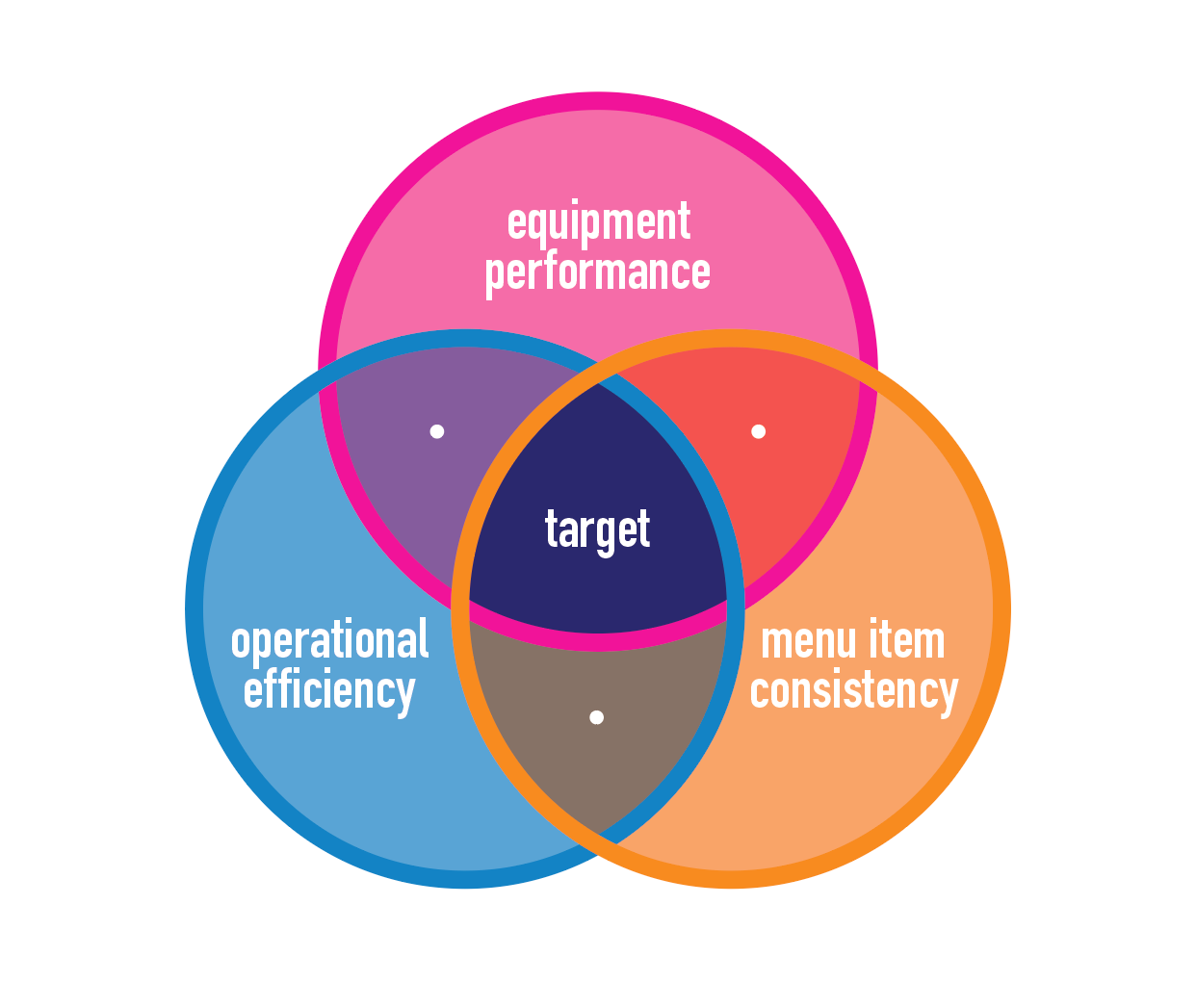Operations
What Captain D’s can teach chefs about mixing batter
Larry Jones, VP of Construction with Captain D’s, shares how blender failures inspired it to look for new mixing solutions.

June 3, 2020 by Sam Eppehimer
Picture a Venn diagram with three intersecting circles. These circles represent key considerations for your operation’s batter mixing process:
- Equipment performance.
- Menu item consistency.
- Operational efficiency
Depending on your batter mixing method, you may be successful in one or two sections of the Venn diagram.
1. Equipment performance
The simplest equipment option is mixing by hand. How well the employee follows the outlined steps dictates performance, and it requires someone to be actively involved in the mixing process. A large industrial mixer uses slower speeds to incorporate ingredients. Its large, top-down paddle is best suited for dough and mixing menu items with higher viscosity, like mashed potatoes.
A blender, like those used to mix drinks, has a much higher RPM. The sharp blades and high rotation lead to aeration or air bubbles in the mixture. Additionally, blenders may not keep up with the demands of a commercial kitchen.
2. Menu item consistency
Consistency is important not only from batch to batch but from store to store. Consistent menu items enhance the guest experience and support your brand.
Wet and dry ingredients for batter need to be mixed right away. If not, they can begin clumping, making it more difficult to maintain product quality and consistency.
Clumping can also be an issue when hand mixing. Depending on the employee’s technique and the shape and size of the vessel, dry mixture can be left unincorporated in hard-to-reach areas or on utensils.
Consistency can also suffer if you have to switch between two different mixing methods. Let’s say you typically use a blender, but it breaks. If you switch to prepping by hand, it will lead to a noticeably different end product.
3. Operational efficiency
The time needed to properly mix batter varies based on several factors:
- The size of the vessel and how much batter can be mixed at one time.
- The approved “hold time” for the mixed batter.
- Any resting time for the batter to chill.
- Whether it’s done in large batches before peak mealtimes or in several batches throughout the day
Mixing by hand requires the most time. One chain’s recipe involves eight quarts of water and more than 9 pounds of dry mix. Combining these ingredients is labor-intensive, taking more than six minutes of tedious mixing by hand for each batch.
Captain D’s approach to mixing batter
Equipment manufacturers and fast casual chains can work together to assess the batter-mixing process and determine a solution that reaches the center of the Venn diagram ― achieving reliability, consistency and efficiency. Captain D’s recently underwent an equipment evaluation, for example, seeking to remedy the challenges in its batter-mixing process.
The chain uses a proprietary, tempura-style batter for its Batter-Dipped Fish ― a signature item for 50 years. Prepared in-house every day, it is critical that the batter be consistent across their 500+ restaurants.
They had used a standard blender to mix batter, but experienced reliability issues.
"We were going through so many blender failures that we purchased four dozen to keep in a pool to swap out so a restaurant would not be down for too long," Larry Jones, VP of Construction with Captain D’s.
These failures and the added equipment cost for the back-up blenders prompted Jones and his team to look for new solutions for their unique situation. They knew the resulting batter needed to be as good or better than that prepared with the blender.
The evaluation process for a new equipment solution was comprehensive, and Jones offers three key takeaways from their search.
3 takeaways from Captain D’s equipment evaluation
- Consider customized options
Manufacturers have been willing to work with Captain D’s on designing specific equipment to meet the chain’s needs. These partnerships require collaboration and risk on both sides but have resulted in some exciting new equipment solutions.
"There’s not many like us — a unique provider of seafood in a casual, quick environment,” Jones said. “Our process and food production needs are unique, and that has led to a lot of innovation throughout our history.” - Conduct a thorough test process
Once Captain D’s and its manufacturing partner landed on a prototype, the real testing of the batter-mixing equipment began. The chain’s batter manufacturer and QA department evaluated the taste, texture, performance and viscosity for the batter made in the new equipment and that made in the blender. The batter performance was better with the new equipment.
After passing that hurdle, Captain D’s put 10 units in the field for six months. Jones offered a few tips for a comprehensive evaluation process:
-Be sure that your testing protocol is sound before you take the leap.
-Take your time ― at least 90 days, six months if you can.
-Communicate weekly with the owner or managers of your test locations and conduct unannounced visits to solicit feedback He said that no news from the test site is not necessarily good news — “If it’s not working, they might set it aside and just not use.”
Throughout the testing process, there were zero failures, and the new equipment received praise from the testers. The manufacturer also got great info for tweaks that were made prior to final manufacturing. - Challenge your assumptions
One assumption Captain D’s execs had to challenge was the mix-speed velocity. They assumed it needed high velocity and the blender blades to shear the mix and achieve their batter profile. They learned that was not the case. The new equipment even provides unanticipated benefits, such as being able to add all of the dry mix at once (instead of gradually) and a quieter operation.
“Challenge your assumptions and be prepared to barbecue a few sacred cows to take things to the next level of excellence. Focus more on the result, not the process," Jones said.
Ideal batter-mixing solution
By removing assumptions, partnering with a knowledgeable manufacturer and conducting a comprehensive review process, Captain D’s found an equipment solution that met all of its operational needs — not just some of them.
Sam Eppehimer, CFSP, is the VP of Engineering at AyrKing. As a leading manufacturer of food prep equipment, AyrKing offers durable, efficient products that allow operators to prep the foods customers love more quickly and more consistently. AyrKing recently launched Mixstir, a purposefully designed mixer for batters, seasoned oils and other menu items that require frequent or slow stirring.







